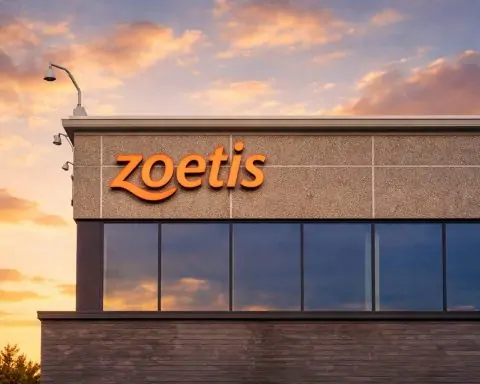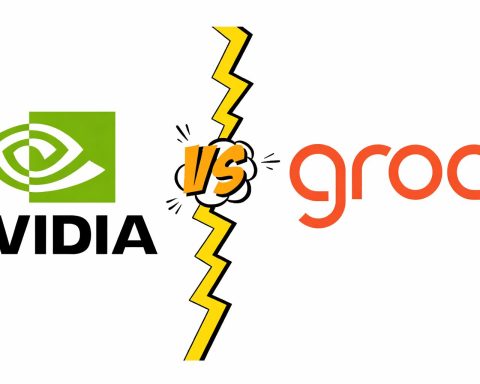Opendoor Technologies Inc. (OPEN) is back in the market spotlight today as a flood of fresh coverage dissects its high‑stakes AI pivot, a $1 million insider stock purchase, and the lingering fallout from weak third‑quarter results — all against the backdrop of a meme‑fueled rally that has sent the stock from penny‑stock territory to around $8–9 a share this year. [1]
Opendoor share price snapshot on 14 November 2025
- Last price: about $8.6–$8.8 during Friday trading
- Day range: roughly $7.85 – $8.96
- 52‑week range:$0.51 – $10.87
- Market cap: around $8 billion
- 1‑year move: up roughly 350–400%, and nearly 1,500% off the June low of $0.51, according to multiple data providers. [2]
That surge has turned Opendoor into one of 2025’s most talked‑about meme stocks — but today’s news coverage shows just how divided opinion remains on whether the ride can continue. [3]
Today’s key headlines on Opendoor (OPEN)
A cluster of articles dated November 14, 2025 zero in on four big themes: the AI pivot, insider buying, the stock’s eye‑popping run, and its still‑fragile business model.
1. “Massive News: Opendoor Just Announced a Major Pivot”
A new piece syndicated by The Motley Fool and surfaced on Finviz describes “massive news” for Opendoor: management is now framing the company as moving “from home flipping to artificial intelligence.” [4]
The article builds on messaging from Opendoor’s Q3 earnings week, when new CEO Kaz (Kasra) Nejatian repeatedly called Opendoor a software‑ and AI‑driven company, not just a balance‑sheet‑heavy home flipper. [5]
Key ideas behind the pivot, drawn from recent earnings coverage and analysis:
- Opendoor wants to be seen as a proptech / e‑commerce platform for homes, using AI and automation to price houses, manage risk, and speed up transactions. [6]
- Management says more than a dozen AI products have already been rolled out, and the company is refocusing headcount and spending toward in‑house software development while cutting consultants. [7]
- Nejatian’s long‑term goal: reach adjusted net income breakeven on a 12‑month forward basis by the end of 2026, primarily by increasing volumes, tightening unit economics, and “being ruthless” on costs. [8]
Today’s “pivot” headline is really the public‑market amplification of that “Opendoor 2.0” story: less focus on owning homes, more on monetizing the tech that prices and moves them.
2. “This CEO Just Made a Big $1 Million Bet on Opendoor Stock”
Over at 24/7 Wall St., Rich Duprey highlights a very visible show of confidence: Nejatian’s open‑market purchase of 125,000 Opendoor shares, worth just over $1 million, earlier this week. [9]
According to SEC filings and insider‑tracking sites:
- Nejatian bought 125,000 shares at a weighted average price a little above $8 per share, bringing his direct stake to more than 83 million shares. [10]
- The trade executed on November 12, 2025, just after the post‑earnings blackout window lifted. [11]
- TipRanks notes that the stock jumped more than 16% in the 24 hours around the disclosure, as traders followed the insider move and analysts nudged up price targets while still warning about execution risk. [12]
Duprey frames the buy as both symbolic and risky: it highlights management’s belief in the AI pivot and turnaround plan, but it doesn’t change the reality that Opendoor is still losing money in a tough housing market and carries almost $1.9 billion in liabilities against $962 million in cash and short‑term investments. [13]
3. “If You’d Invested $100 in Opendoor Stock 1 Year Ago…”
Another Motley Fool–authored piece, rehosted on Nasdaq and flagged by Finviz this morning, leans into the meme‑stock narrative by running a simple thought experiment: what if you’d put $100 into OPEN a year ago? [14]
The article notes that:
- Opendoor’s share price sunk to about $0.51 in June before rocketing higher on a coordinated retail investor push and growing optimism around new leadership. [15]
- Over the past 12 months the stock is up roughly 364%, turning that hypothetical $100 into about $463 at recent prices. [16]
But the tone is not all celebratory. The author reminds readers that:
- The business is still under heavy pressure from high mortgage rates and weak housing turnover.
- New CEO Kaz Nejatian has laid out an ambitious growth and AI strategy, but it will take time — and there’s no guarantee it works. [17]
The piece ends by stressing that, despite the huge gains, Motley Fool’s flagship stock‑picking service doesn’t currently include Opendoor among its top ideas — a gentle way of saying that even bullish commentators see it as high risk, high reward. [18]
4. “Is There a Future for Opendoor Technologies?”
Jennifer Saibil’s “Is There a Future for Opendoor Technologies?” — also from Motley Fool and summarized via Finviz today — is the most skeptical of the new batch. [19]
Key points:
- Even after its blistering rally, Opendoor’s stock is still about 78% below its 2021 peak, underscoring how brutal the last few years have been. [20]
- The Q3 report was “disappointing”:
- Revenue fell roughly 34% year over year.
- Gross margin slipped to the mid‑single digits.
- Net loss widened from $78 million to $90 million. [21]
- Saibil argues that iBuying remains an inherently hard, capital‑intensive business — and even under better macro conditions, it might take a long time for Opendoor’s new services and AI initiatives to translate into durable profits. [22]
Her conclusion: there might be a future, but investors looking for more predictable growth or profits may want to stay on the sidelines for now.
5. “2 Growth Stocks to Invest $1,000 in Right Now”
In a separate Motley Fool piece, also dated today, Opendoor appears in more upbeat company: it’s one of two growth stocks (alongside Palantir) highlighted as potential buys after a recent pullback. [23]
The article’s angle:
- Both stocks have more than doubled this year but are down roughly 17–21% from recent highs, which the author sees as a chance to buy at somewhat cooler valuations. [24]
- For Opendoor, the bull case leans heavily on the AI pivot, rising transaction volumes over time, and the new CEO’s credibility, while acknowledging that volatility will likely remain high. [25]
In other words, some growth‑oriented commentators now see OPEN as a speculative but potentially rewarding “buy the dip” candidate after its monster run.
6. Fresh deep‑dives: Q3 numbers and value screens
Two more long‑form analyses went live today:
a) Global Market Bulletin: Q3 2025 earnings breakdown
Global Market Bulletin published a detailed Q3 recap under the headline “Opendoor (OPEN)’s Q3 2025 Revenue Falls 33% to $915M, Yet Beats Guidance.” [26]
Highlights from that piece and public filings:
- Revenue: $915 million, down ~33% from $1.38 billion a year earlier, but ahead of Opendoor’s own guidance of $800–$875 million and above Wall Street’s consensus near $850 million. [27]
- Net loss: widened to $90 million, up about 15% from last year’s $78 million loss. [28]
- Gross profit: down roughly 37% year over year, reflecting thinner spreads and a tougher housing backdrop. [29]
- Macro pressures: Elevated mortgage rates and low transaction volumes are still squeezing Opendoor’s core iBuying economics via slower inventory turns and higher holding costs. [30]
Interestingly, Google Finance’s snapshot shows free cash flow of about $366 million in Q3 as Opendoor shrank its inventory and tightened capital use, even while posting an accounting loss — a nuance some bearish takes gloss over. [31]
b) Nasdaq / Validea: Benjamin Graham screen
Nasdaq carried a Validea report titled “Benjamin Graham Detailed Fundamental Analysis – OPEN”, which runs Opendoor through a classic Graham‑style value screen. [32]
Key takeaways:
- The stock earns a 57% score under Validea’s Graham model, below the 80%+ level that would indicate real enthusiasm from that framework. [33]
- Opendoor passes tests on sector, sales scale, current ratio and long‑term debt vs. net current assets.
- It fails on long‑term EPS growth, price‑to‑earnings, and price‑to‑book — reflecting a lack of sustained profits and a valuation that’s now well above book value (Google Finance pegs the P/B ratio above 8x). [34]
The message: even value‑oriented screeners that acknowledge Opendoor’s improved balance sheet and scale still see its profit history and valuation as problematic.
Special dividend of warrants: OPENW, OPENL, OPENZ
Another big piece of the Opendoor puzzle — heavily referenced in this week’s coverage and crucial for existing shareholders — is the special dividend of tradable warrants announced on November 6. [35]
According to the official press release and subsequent summaries:
- Record date: 5:00 p.m. ET on November 18, 2025.
- Distribution date: on or about November 21, 2025.
- Payout: For every 30 shares of common stock, investors receive one Series K, one Series A and one Series Z warrant (rounded down). [36]
- Exercise prices:
- Series K (ticker expected OPENW) – $9.00
- Series A (OPENL) – $13.00
- Series Z (OPENZ) – $17.00 [37]
- Expiry: all three series expire on November 20, 2026, unless certain early‑expiration price conditions are met. [38]
CEO Kaz Nejatian has pitched the program as a “shareholder‑first” alignment tool: if management hits the ambitious targets baked into those strike prices, both insiders and common shareholders get leveraged upside via the warrants. [39]
Critics, including Global Market Bulletin, have pointed out that:
- The structure could invite speculation and volatility, attracting traders who chase the warrants rather than long‑term fundamentals.
- Exercising the warrants would eventually dilute existing shareholders, even if it provides Opendoor with fresh capital. [40]
How the market is digesting all this
Wild swings and meme‑stock dynamics
Data from TradingView, IndMoney, and others illustrate just how volatile OPEN has been: [41]
- June 2025 low: $0.51
- September 2025 high: $10.87
- Today: hovering around $8.6–$8.8, down roughly 20% from the highs but still up several hundred percent for the year.
Retail investors — sometimes dubbed the “Open Army” in media coverage — have been instrumental in that move, coordinating on social platforms and Reddit communities like r/opendoor. Recent daily discussion threads are full of posts about buying dips near $8, debating whether the story is more than a housing bet, and reminding each other of the risks if the broader market sells off. [42]
At the same time, short sellers haven’t gone away: some commentary today notes that short interest still accounts for more than 20% of the free float, a sign that a sizable group of investors is actively betting against the turnaround. [43]
Fundamentals vs. narrative
Put together, today’s stories sketch a fairly consistent picture:
- The AI pivot is real but unproven.
- Multiple outlets — from MarketWatch and Nasdaq to Barchart and Real Estate News — report that Nejatian wants Opendoor “re‑founded” as a software and AI company, using technology to improve pricing accuracy, speed, and operating leverage. [44]
- But Q3 still showed shrinking revenue, thin margins, and ongoing losses, reinforcing that the business hasn’t turned the corner yet. [45]
- Insider moves and warrant mechanics support the story but add complexity.
- Nejatian’s $1 million buy is a strong signal of conviction and has clearly energized the bull camp. [46]
- The warrant dividend is being marketed as a way to align management and shareholders, but also introduces questions about dilution, speculation, and what happens if the stock never reaches those strike prices. [47]
- Valuation is now front and center.
- The Benjamin Graham screen’s middling 57% score and high P/B ratio show that, from a strict value‑investing lens, OPEN still doesn’t look cheap. [48]
- Analyst and blogger sentiment is mixed: Zacks and some Motley Fool writers talk up the “turnaround story,” while others warn that meme‑fuelled gains and an unproven AI strategy make this a speculative trade rather than a core holding. [49]
What it all means if you’re watching OPEN
From today’s coverage, a few practical takeaways emerge:
- Expect volatility. OPEN trades like a high‑beta meme stock whose price is driven as much by sentiment, short squeezes, and social‑media campaigns as by quarterly fundamentals. [50]
- The bull case hinges on execution, not just AI buzzwords. The AI pivot could meaningfully improve pricing, speed, and capital efficiency — but only if Opendoor can deploy its tech at scale without getting crushed by housing cycles or overextending its balance sheet again. [51]
- Insider alignment is stronger than it was a year ago. A new CEO with a large personal stake, plus performance‑linked warrants, is a very different setup from the pre‑2025 era — but alignment doesn’t eliminate business risk. [52]
- Fundamentals still need to catch up. Despite improving cash flow and a cleaner balance sheet, Opendoor remains unprofitable, with shrinking revenue and thin gross margins in a difficult real‑estate environment. [53]
For now, today’s barrage of articles reinforces a simple message: Opendoor has evolved from a simple iBuyer into one of the market’s most closely watched AI‑and‑real‑estate experiments. Whether OPEN at $8–9 is the start of a durable comeback or just another chapter in meme‑stock history will depend less on headlines — and more on what the company delivers over the next few quarters.
This article is for informational purposes only and does not constitute financial advice or a recommendation to buy or sell any security. Always do your own research or consult a licensed financial professional before making investment decisions.
References
1. www.google.com, 2. www.google.com, 3. 247wallst.com, 4. finviz.com, 5. www.marketwatch.com, 6. www.barchart.com, 7. www.insiderfinance.io, 8. www.nasdaq.com, 9. 247wallst.com, 10. 247wallst.com, 11. www.tipranks.com, 12. www.tipranks.com, 13. 247wallst.com, 14. www.nasdaq.com, 15. finviz.com, 16. finviz.com, 17. finviz.com, 18. finviz.com, 19. finviz.com, 20. finviz.com, 21. finviz.com, 22. finviz.com, 23. www.fool.com, 24. www.aol.com, 25. www.nasdaq.com, 26. globalmarketbulletin.com, 27. globalmarketbulletin.com, 28. globalmarketbulletin.com, 29. globalmarketbulletin.com, 30. globalmarketbulletin.com, 31. www.google.com, 32. www.nasdaq.com, 33. www.nasdaq.com, 34. www.nasdaq.com, 35. www.stocktitan.net, 36. www.stocktitan.net, 37. www.stocktitan.net, 38. www.stocktitan.net, 39. www.stocktitan.net, 40. globalmarketbulletin.com, 41. www.investing.com, 42. www.reddit.com, 43. 247wallst.com, 44. www.marketwatch.com, 45. www.google.com, 46. 247wallst.com, 47. www.stocktitan.net, 48. www.nasdaq.com, 49. www.nasdaq.com, 50. 247wallst.com, 51. www.nasdaq.com, 52. 247wallst.com, 53. www.google.com








